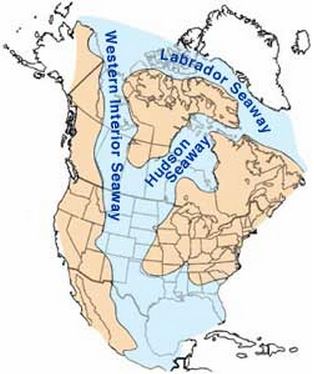Cretaceous Western Interior Seaway
Online Biology Dictionary
|
|
EUGENE M. MCCARTHY, PHD
The Cretaceous Western Interior Seaway (/krə-TAY-shəs/) was a sea that divided the eastern and western portions of North America for about 60 million years (130-70 mya). Also known as the Cretaceous Seaway, the Niobraran Sea, and the North American Inland Sea, it stretched from the Arctic to the Gulf of Mexico, and at its widest, in the Middle Cretaceous, it extended from present-day Utah to the Appalachian Mountains. For this reason, marine fossils are common in the Great Plains of North America (it was in this region that many of the mosasaurs, tremendous whalelike animals of the Cretaceous) were first discovered. This sea also extended over much of eastern and southern Mexico, as well as over the Gulf states in the U.S., where it submerged Texas, Louisiana, Mississippi and Florida in their entirety.
